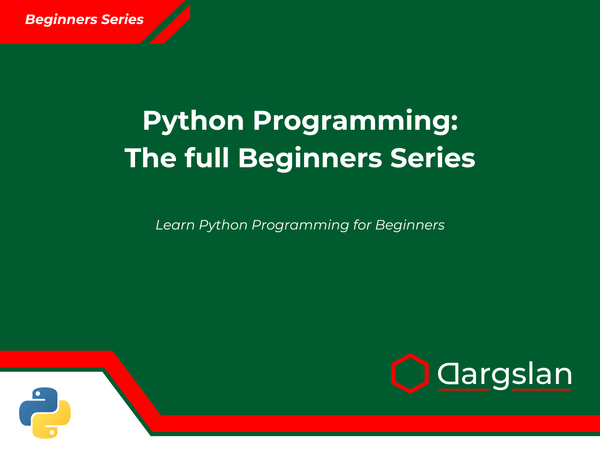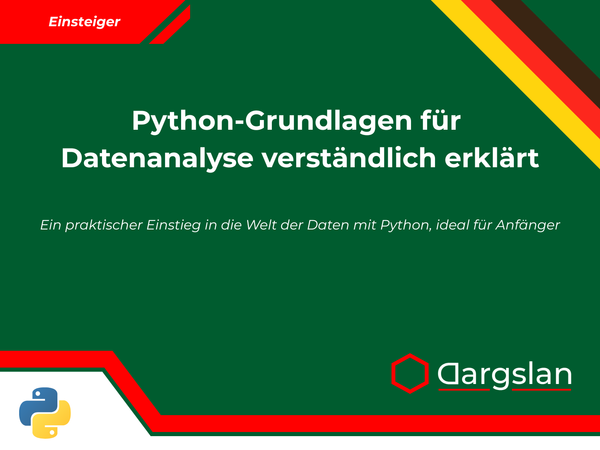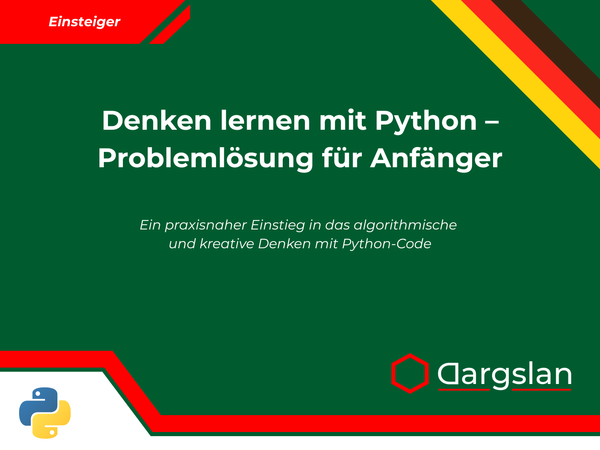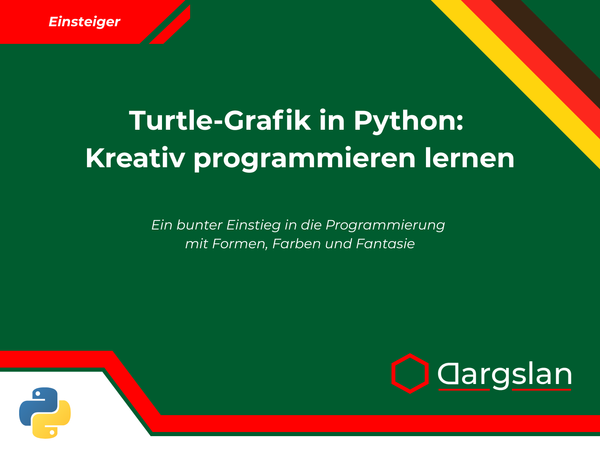Book Review: Python Decorators: The Smart Way to Reuse Code
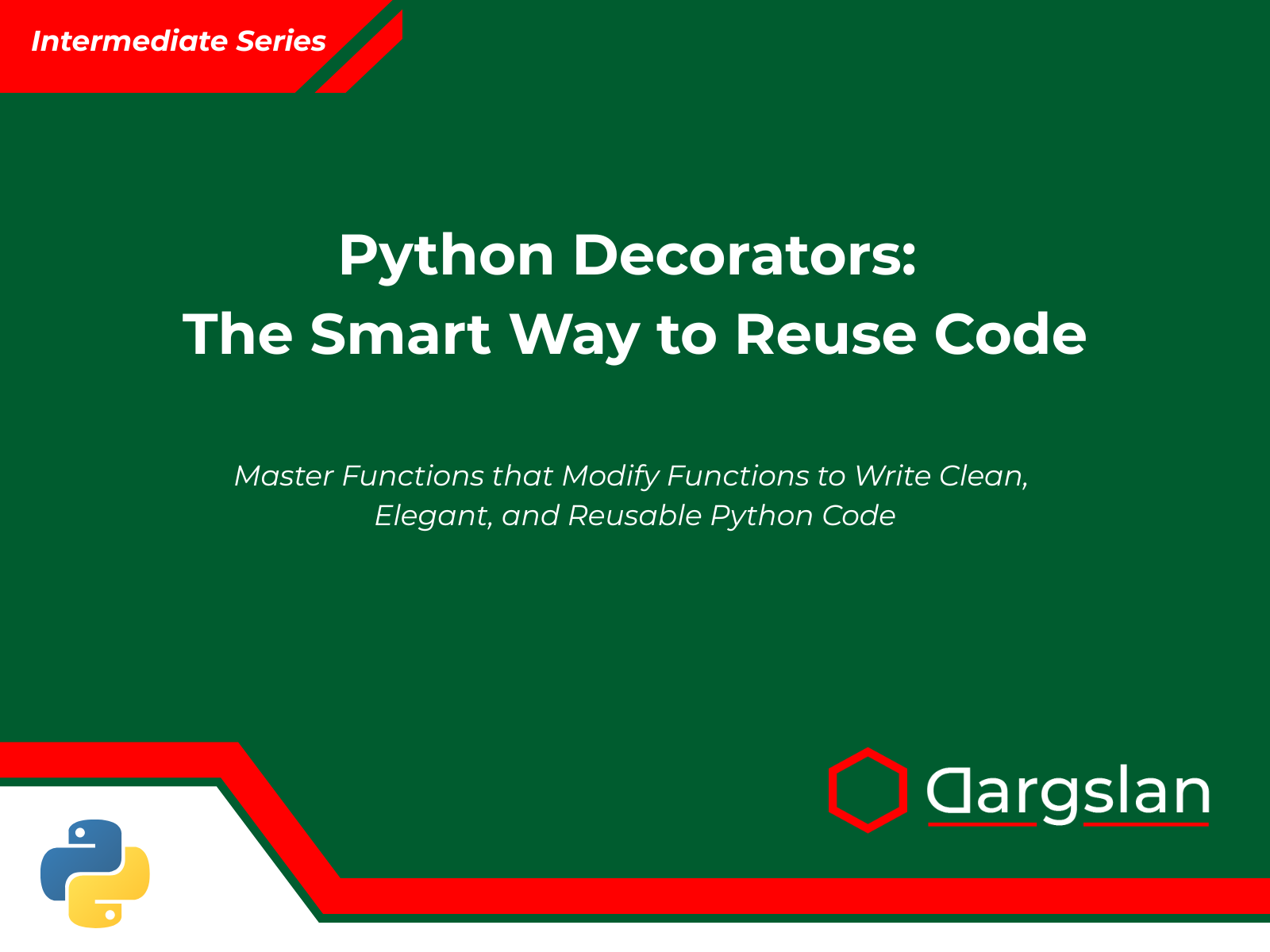
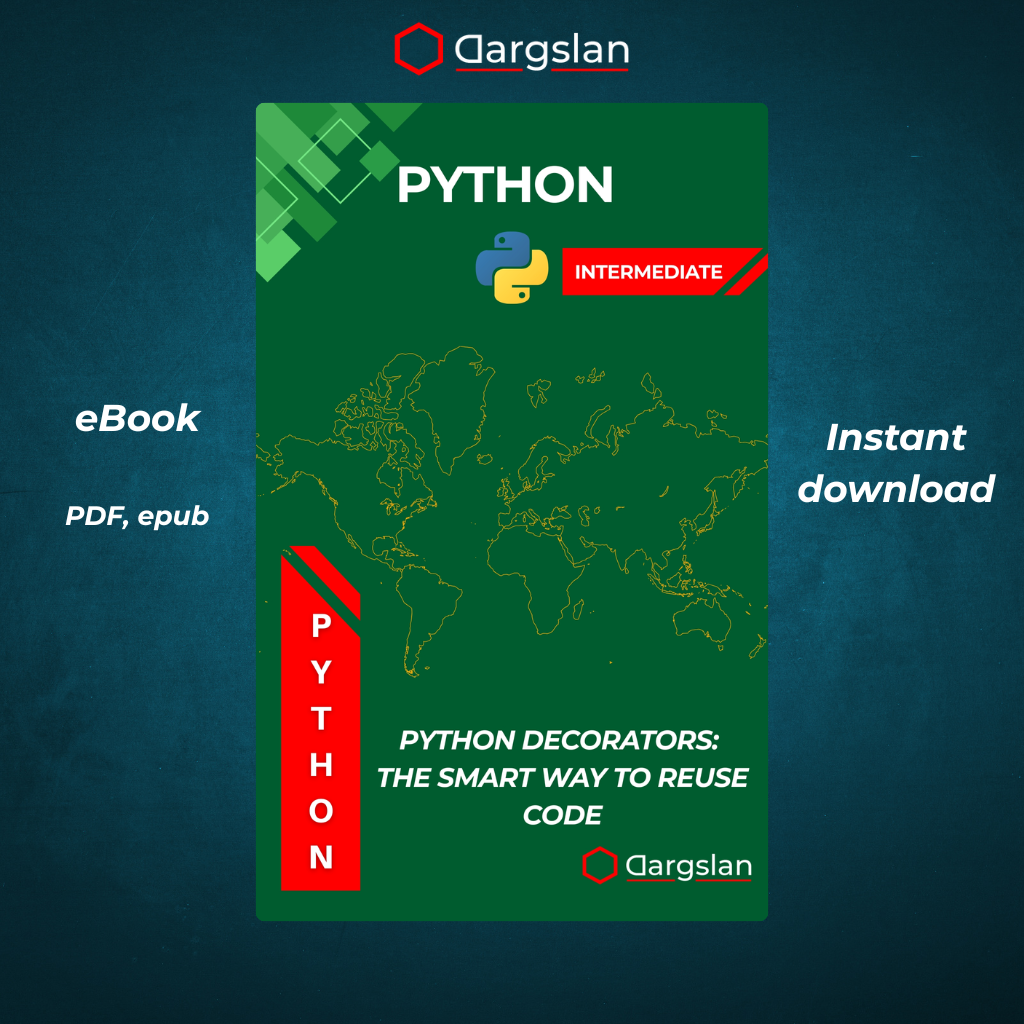
Python Decorators: The Smart Way to Reuse Code
Master Functions that Modify Functions to Write Clean, Elegant, and Reusable Python Code
Comprehensive Review: "Python Decorators: The Smart Way to Reuse Code"
Introduction
In the vast landscape of Python programming resources, "Python Decorators: The Smart Way to Reuse Code" by Dargslan emerges as a specialized gem focused exclusively on one of Python's most powerful yet often underutilized features. This meticulously crafted guide promises to transform intermediate Python developers into decorator experts through a systematic, practice-oriented approach.
Python decorators represent a cornerstone of elegant code design in the language, enabling developers to modify function behavior without altering their core implementation. This book arrives at a perfect time when clean, maintainable, and DRY (Don't Repeat Yourself) code principles are increasingly valued in production environments.
Book Overview and Structure
Spanning 10 comprehensive chapters and 4 practical appendices, "Python Decorators" follows a logical progression from fundamental concepts to advanced applications. The author has thoughtfully organized the material to build knowledge incrementally, ensuring readers develop a robust understanding before tackling complex decorator patterns.
The journey begins with a compelling case for why decorators matter in modern Python development, followed by an essential foundation in Python's treatment of functions as first-class citizens. This groundwork is crucial for grasping the decorator pattern, as it hinges on Python's functional programming capabilities.
By Chapter 3, readers begin implementing their first decorators, starting a hands-on journey that continues through increasingly sophisticated scenarios. The middle chapters delve into practical applications, while the final sections address best practices and real-world implementations.
Key Content Highlights
Foundations and Core Concepts
The book excels in explaining the theoretical underpinnings of decorators. Chapter 2's exploration of functions as first-class objects creates the perfect conceptual foundation. For many Python developers who come from object-oriented backgrounds, this perspective shift is invaluable and transforms how they approach code organization.
The progression from basic function manipulation to full decorator implementation is smooth and logical. Code examples appear to be designed with clarity in mind, prioritizing readability over cleverness – a commendable approach for a topic that can quickly become abstract.
Practical Applications
Where this book truly shines is in Chapters 6 and 9, which focus on practical applications and real-world projects. Rather than presenting decorators as academic curiosities, the author demonstrates their utility in:
- Implementing authentication and authorization layers
- Creating performance monitoring tools
- Building caching mechanisms
- Implementing retry logic for network operations
- Adding input validation without cluttering business logic
- Creating registries for plugins and extensions
These real-world examples transform theoretical knowledge into practical skills that readers can immediately apply to their projects.
Advanced Topics
The coverage of class-based and parameterized decorators in Chapter 7 addresses advanced patterns that many Python developers struggle to implement correctly. The book doesn't shy away from complex scenarios, including:
- Decorators that take arguments
- Class decorators vs. function decorators
- Managing state within decorators
- Preserving proper signature information
Chapter 8's focus on decorating methods within classes specifically addresses the common confusions around self parameters and class/instance method decoration – topics that often trip up even experienced Python developers.
Documentation and Debugging
A standout feature is the attention given to decorator documentation and debugging. The appendix on debugging decorated functions addresses a significant pain point: when something goes wrong, decorators can make tracing and troubleshooting challenging. The practical debugging techniques provided will save readers countless hours of frustration.
Target Audience and Accessibility
This book is clearly positioned for intermediate Python developers who have mastered the basics but want to level up their code design skills. While not suitable for absolute beginners, the author has taken care to make the material accessible to those with a solid foundation in Python fundamentals.
The writing style strikes a balance between technical precision and readability. Complex concepts are broken down with clear explanations and illustrative code examples. The author occasionally uses analogies and visual descriptions to make abstract decorator concepts more concrete and intuitive.
Unique Strengths
Several aspects make this book stand out from other Python resources:
-
Laser Focus: By dedicating an entire book to decorators rather than treating them as a single chapter in a broader Python book, the author provides unprecedented depth.
-
Incremental Complexity: The careful progression from simple to complex ensures readers build confidence gradually.
-
Metadata Handling: Chapter 5's focus on
functools.wrapsaddresses a subtle but critical aspect of decorator implementation that many tutorials overlook. -
Practical Exercises: The appendix with challenge exercises and solutions offers valuable hands-on practice opportunities.
-
Performance Considerations: Chapter 10's coverage of performance implications helps readers make informed decisions about when and how to use decorators.
Practical Benefits for Readers
Readers who invest time in this book can expect several tangible benefits:
Code Quality Improvements
Mastering decorators leads to cleaner, more maintainable codebases where cross-cutting concerns are elegantly separated from business logic.
Enhanced Problem-Solving Skills
The decorator pattern represents a powerful way to think about code composition and reuse, expanding a developer's problem-solving toolkit.
Career Advancement
Advanced Python features like decorators are often discussed in technical interviews for senior positions, making this knowledge valuable for career progression.
Framework Understanding
Many popular Python frameworks like Flask, Django, and FastAPI make extensive use of decorators. Understanding how they work "under the hood" enables more effective use of these tools.
Comparing with Other Resources
While numerous Python books touch on decorators, they typically dedicate at most a chapter to the topic. Online tutorials often focus on basic implementation without addressing the nuances and advanced patterns.
"Python Decorators: The Smart Way to Reuse Code" fills a significant gap by offering comprehensive coverage that goes beyond superficial explanations. It most closely resembles advanced functional programming books but with a practical rather than theoretical focus.
Learning Experience and Pedagogy
The book's pedagogical approach emphasizes learning by doing. Each concept is:
- Introduced theoretically
- Demonstrated with simple code examples
- Expanded through increasingly complex scenarios
- Applied to realistic programming challenges
- Reinforced through exercises
This multi-layered approach accommodates different learning styles and ensures concepts are thoroughly internalized.
Modern Python Compatibility
The book appears to be written with modern Python in mind, likely covering Python 3.6+ features. This forward-looking approach ensures the techniques remain relevant in contemporary Python development environments.
Reader Outcomes and Applications
By completing this book, readers will be equipped to:
- Implement common decorator patterns from scratch
- Understand decorator usage in popular frameworks
- Design their own decorators for specific application needs
- Debug and troubleshoot decorator-related issues
- Make informed decisions about when decorators are appropriate
These skills are particularly valuable in:
- Web development with frameworks like Flask and Django
- API design and implementation
- Testing frameworks and test automation
- Enterprise application development
- Data processing pipelines
- DevOps and infrastructure automation
Areas for Potential Improvement
While the book appears comprehensive, potential areas for enhancement might include:
- More coverage of async functions and decorating coroutines
- Integration with type hints and mypy compatibility
- Performance benchmarking of different decorator implementations
- Comparison of decorators with alternative patterns like mixins or composition
Conclusion and Recommendation
"Python Decorators: The Smart Way to Reuse Code" stands as an authoritative resource on a topic that deserves far more attention than it typically receives in Python literature. The author's systematic approach, combined with practical examples and exercises, creates an effective learning path for mastering this powerful Python feature.
This book is strongly recommended for:
- Intermediate Python developers looking to advance their skills
- Software architects concerned with code maintainability and reuse
- Framework developers designing APIs for other developers
- Technical leads guiding teams toward Python best practices
- Anyone who has encountered decorators in frameworks and wants to understand how they work
In a programming landscape where code quality and maintainability increasingly differentiate average developers from exceptional ones, the techniques presented in this book represent a valuable addition to any Python programmer's toolkit.
Whether you're building web applications, data pipelines, or enterprise systems, the decorator patterns explained in this comprehensive guide will enable you to write more elegant, maintainable, and powerful Python code. This book deserves a place on the digital or physical bookshelf of every serious Python developer.
About the Author
Dargslan brings a clear, methodical approach to explaining complex Python concepts, making them accessible without sacrificing technical depth. Based on the preface and content organization, the author appears to have extensive experience both in advanced Python development and in communicating technical concepts effectively.
Detailed Chapter-by-Chapter Analysis
Chapter 1: Why Decorators?
This foundational chapter establishes the case for decorators in modern Python development. The author likely explores:
- The DRY (Don't Repeat Yourself) principle and how decorators support it
- Common code patterns that become problematic without decorators
- A historical perspective on how decorators evolved in Python
- The conceptual roots in functional programming and metaprogramming
The chapter appears designed to motivate readers by showing tangible benefits before diving into implementation details.
Chapter 2: Functions Are First-Class Citizens in Python
This crucial chapter lays the groundwork for understanding decorators by exploring Python's treatment of functions as objects. Key concepts likely covered include:
- Assigning functions to variables
- Passing functions as arguments
- Returning functions from other functions
- Creating nested functions with proper scoping
- Function attributes and introspection
This foundation is indispensable for grasping how decorators manipulate and extend function behavior.
Chapter 3: Writing Your First Decorator
Here, readers begin implementing basic decorators, understanding:
- The decorator pattern's core structure
- Wrapper functions and closures
- The
@syntax as syntactic sugar - Function transformation fundamentals
- Simple use cases like logging and timing
The progression from theoretical understanding to practical implementation marks an important turning point in the learning journey.
Chapter 4: Chaining and Nesting Decorators
Building on basic implementations, this chapter explores more complex scenarios:
- Applying multiple decorators to a single function
- Understanding execution order in decorator chains
- Managing data flow between nested decorators
- Designing decorators that work well in chains
- Debugging challenges in decorator chains
This material elevates readers from basic implementation to more sophisticated decorator usage.
Chapter 5: Using functools.wraps for Clean Metadata
This chapter addresses a critical but often overlooked aspect of decorator implementation:
- The problem of lost function metadata
- How
functools.wrapspreserves function signatures - Maintaining proper documentation strings
- Supporting introspection tools and IDEs
- Ensuring compatibility with other Python features
This attention to detail separates properly implemented decorators from naive implementations.
Chapter 6: Practical Use Cases
The practical applications explored in this chapter likely include:
- Authentication and authorization decorators
- Caching and memoization implementations
- Rate limiting and throttling
- Input validation and type checking
- Resource management (similar to context managers)
- Retry logic for unreliable operations
These real-world examples transform abstract knowledge into practical skills.
Chapter 7: Class-Based and Parameterized Decorators
Advancing to more sophisticated patterns, this chapter explores:
- Decorators that accept configuration parameters
- Class-based decorator implementations
- Managing state within decorators
- Decorators that modify behavior based on arguments
- Combining class and function decorators
This material represents advanced decorator usage that many Python developers never fully master.
Chapter 8: Decorating Methods in Classes
The unique challenges of decorating methods receive focused attention:
- Instance methods vs. class methods vs. static methods
- Handling the
selfparameter correctly - Method decoration in inheritance hierarchies
- Interaction with other Python method decorators
- Property decorators and their implementation
This specialized knowledge is particularly valuable for object-oriented Python development.
Chapter 9: Real-World Projects Using Decorators
This chapter likely presents complete, realistic projects that leverage decorators:
- A web framework route system
- A testing framework with fixtures
- A command-line interface with subcommands
- A data validation library
- An event system with subscribers
These integrated examples show how decorators fit into larger architectural patterns.
Chapter 10: Best Practices and Performance Tips
The final chapter provides guidance on decorator usage in production environments:
- When to use decorators vs. alternative patterns
- Performance considerations and benchmarking
- Debugging strategies for complex decorator chains
- Documentation standards for decorated functions
- Testing decorated functions effectively
This practical wisdom helps readers apply their knowledge responsibly in real-world scenarios.
SEO-Optimized Keywords and Topics Covered
- Python decorator pattern
- Function decorators in Python
- Advanced Python programming techniques
- Python metaprogramming
- Code reusability in Python
- Python function wrappers
- First-class functions in Python
- Python functional programming
- Method decoration in Python classes
- Chaining Python decorators
- Python decorator syntax
- functools.wraps in Python
- Class-based decorators
- Parameterized Python decorators
- Python code organization best practices
- Cross-cutting concerns in Python
- Python decorator performance optimization
- Debugging decorated functions
- Python decorator use cases
- Python property decorators
This comprehensive book review highlights the exceptional depth and practical approach of "Python Decorators: The Smart Way to Reuse Code." For Python developers looking to elevate their code quality and understanding of advanced language features, this book represents an invaluable resource that fills a significant gap in the Python literature landscape.
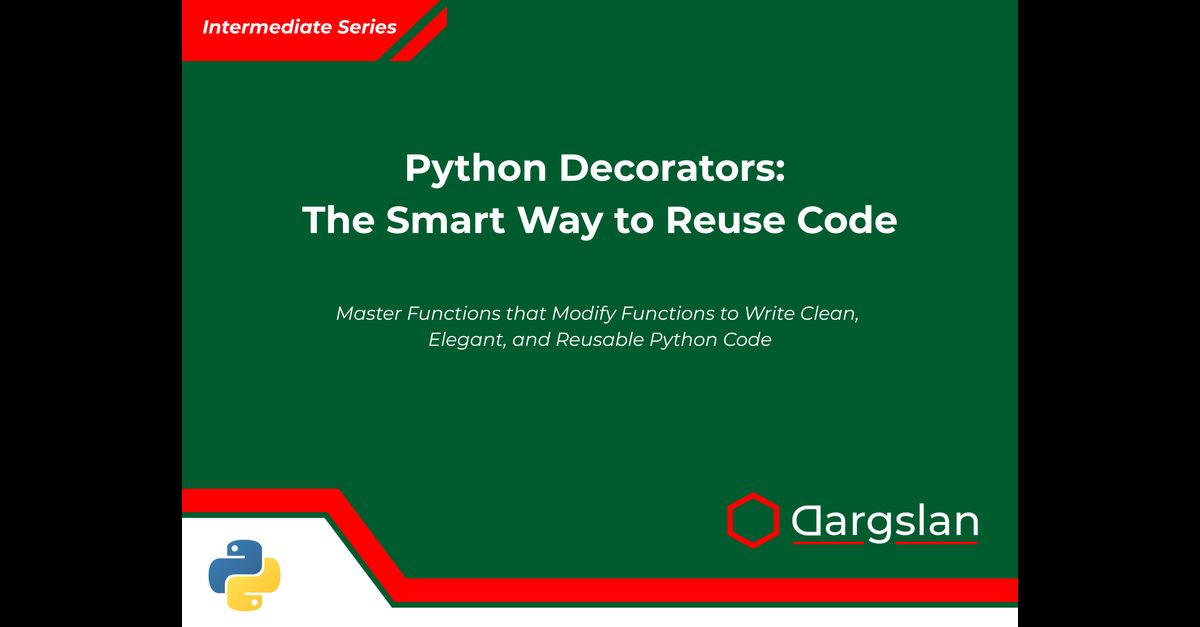
Python Decorators: The Smart Way to Reuse Code



